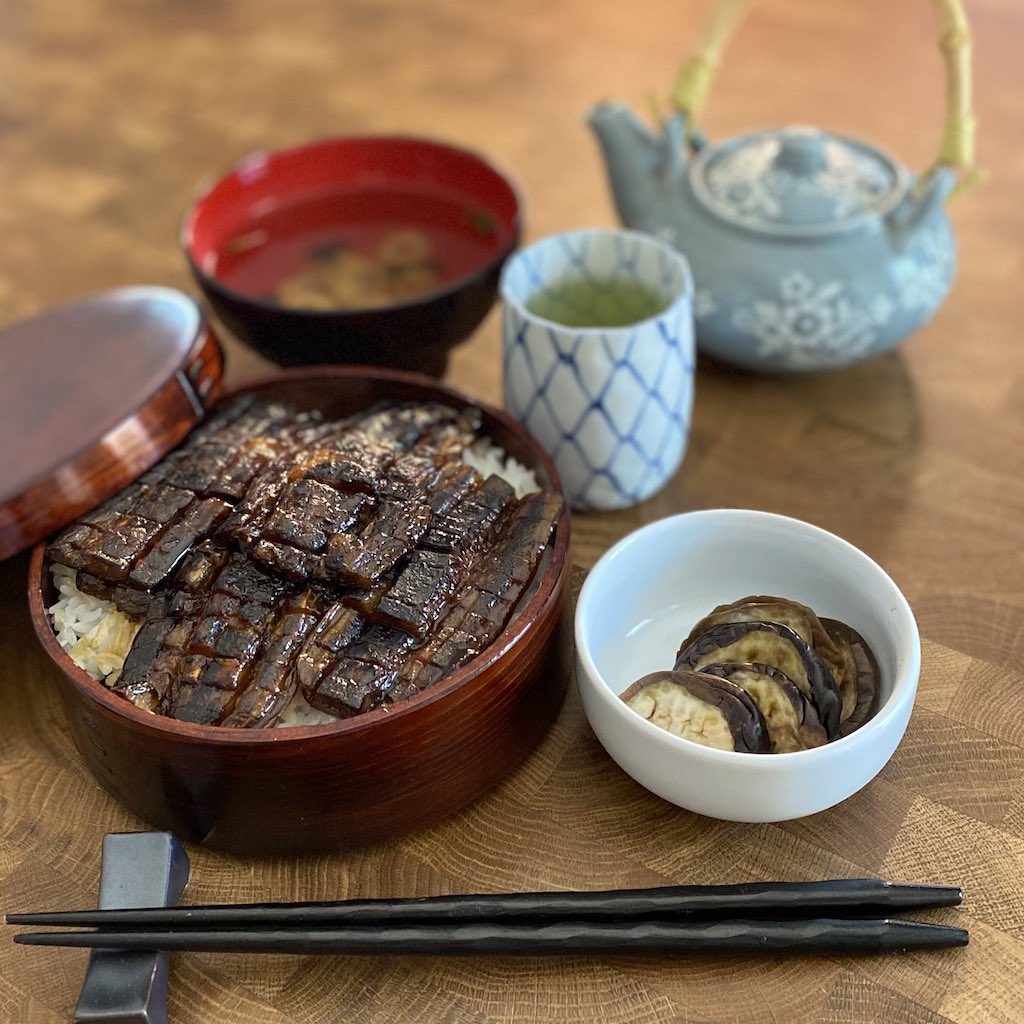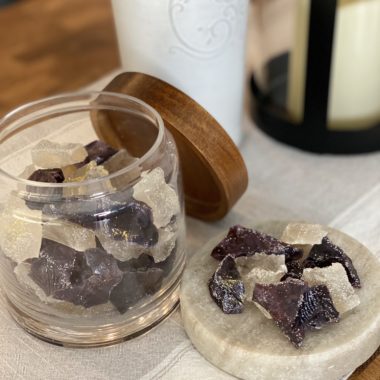Details
1
10 minutes
15 minutes
My mom was never a fan of eel dishes. Naturally, I didn’t develop a taste for it. But eel sauce is another matter. So when I came across some “vegan unagi” bowl recipes, I was delighted!
In Japan, you can get unagi bowls in two ways: unagi-don (eel bowl) or unaju (layered unagi bowl). For this recipe, I made unaju.
I would definitely make this dish again. I’m super glad I have this recipe for a vegan unagi bowl handy, if I ever have any vegetarian or vegan friends over for dinner. It’s absolutely tasty.
For other Japanese recipes using eggplant, try my Miso Eggplant post. For other veggie dishes, try my Daigaku Imo and Agedashi Tofu recipes 🙂
Note
For gluten-free, replace soy sauce with tamari or your preferred gluten-free “soy sauce.”
A handheld torch is important in today’s recipe – I use it to get that proper, necessary char on a vegan unagi bowl.
The only difference between this being a vegan and vegetarian unagi bowl is whether or not you use dashi stock in the braising liquid. If you prefer to go full vegan, use mushroom stock. If you have a hard time finding mushroom stock, soak 3-5 dehydrated shiitake mushrooms in warm water for about an hour. Cook the liquid down to a concentrate. FYI, you’ll lose the fishy element making this reminiscent of eel.

Ingredients
- 1-2 Japanese eggplants (can sub Chinese eggplants)
- 1 tbsp Sake (not cooking sake – does not have to be the expensive stuff)
- Potato Starch (can sub cornstarch)
- 1 tbsp Soy Sauce
- 1 tsp Dashi Powder or mushroom stock
- Vegetable Oil
- 1 tbsp Mirin
- 1 tbsp Sugar (or sugar substitute)
- Culinary / Food-grade Torch
- Steamed Japanese Short-Grain White Rice
- Shredded Nori (dried seaweed)
- Shichimi togarashi
- Sansho powder
Directions
Prep
Peel and butterfly one or two Japanese or Chinese eggplants.
Microwave the eggplant for 1-2 minutes, flipping it over every 30 seconds. The goal here is to wilt the eggplant, not cook it completely.
Remove the eggplant / vegan unagi from the microwave. Place eggplant on a cutting board, flatten it out a bit, and score perpendicularly from the original butterfly cuts. Don’t cut all the way through; just cut about 1/3 of the way through. Dust the prepared eggplant with potato starch – you’re not coating the eggplant completely, it’s just a light dusting. If you can’t find potato starch and opt to use cornstarch, use even less.
Cook
In a frying pan with a small amount of vegetable oil, place the vegan unagi / eggplant slices cut-side down first. Cook for a few minutes, and flip over. If your pan is truly non-stick, you can omit the oil. Char the eggplant, to prevent absorbing excess oil by frying. Remove the eggplant from the pan.
In the now-empty frying pan, add sake, mirin, soy sauce, sugar, and dashi powder (or concentrated shiitake mushroom stock). Cook this down, and gently add the cooked eggplant slices into this braising liquid. Gently flip the vegan unagi / eggplant over a few times to get the slices well-coated with the kabayaki sauce.
Move the eggplant slices over to a rack, and char the top of each vegan unagi with a culinary torch. This will caramelize the sauce and add a touch of charred authenticity to the slices.
Serve
To assemble, put the eggplant slices on top of a bowl of rice.
Serve with a light soup (osuimono, a Japanese mushroom consommé, is common). Add some Japanese quick pickles on the side, and enjoy with some iced tea or beer. Many unagi restaurants will have sansho (green peppercorn) powder and shichimi togarashi (7-spice chili) powder available. If you prefer to add a little kick to your dish, it will definitely elevate your dish.


